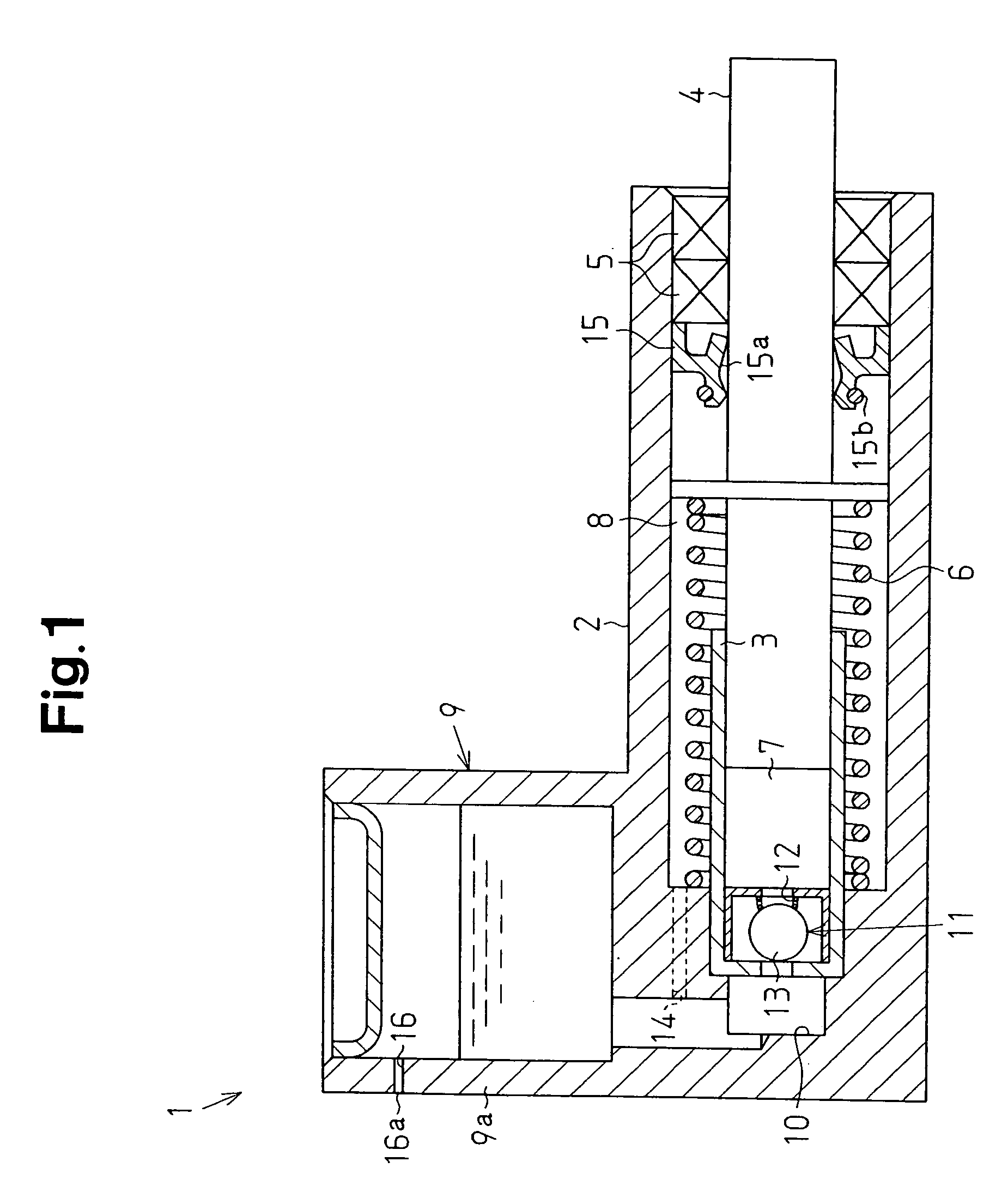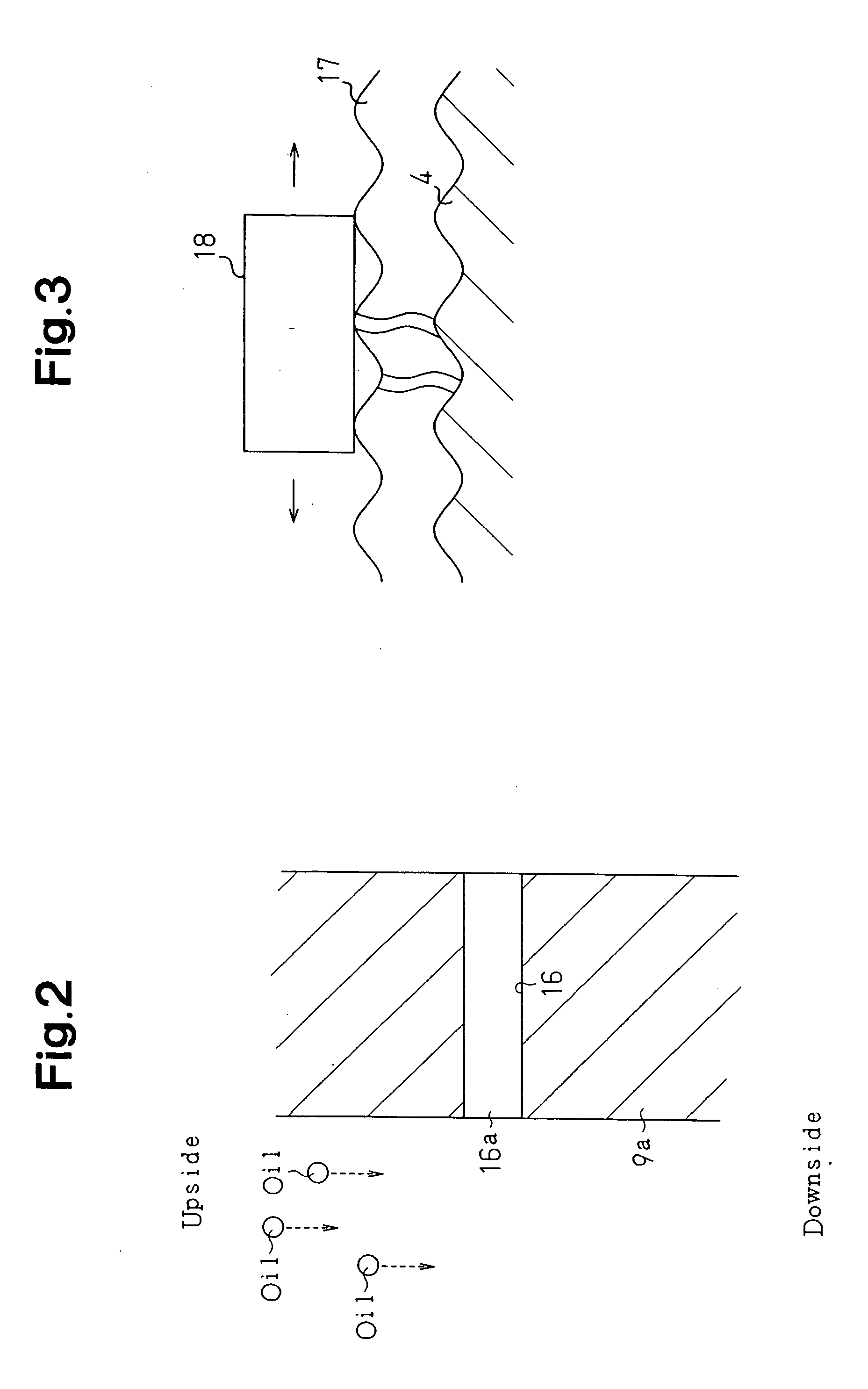Oil tight type chain tensioner
a chain tensioner and oil tight technology, applied in the direction of gearing details, belts/chains/gearrings, gearing details, etc., can solve the problems of increasing the load of the engine driving the oil pump, affecting the movement of the rod, and the oil in the housing affecting the rod movement, etc., to achieve the effect of suppressing non-uniform wear of the oil seal
- Summary
- Abstract
- Description
- Claims
- Application Information
AI Technical Summary
Benefits of technology
Problems solved by technology
Method used
Image
Examples
Embodiment Construction
[0025] An embodiment of the present invention will hereafter be described with reference to FIGS. 1 to 3.
[0026]FIG. 1 is a cross-sectional view showing the interior structure of an oil tight type chain tensioner 1 according to the embodiment of the present invention. The tensioner 1 is employed for a chain transmitting rotation of an engine crankshaft to a camshaft. The tensioner 1 is accommodated in a chain case receiving the chain. Engine oil is supplied to the interior of the chain case for lubricating the chain. When revolving in the chain case, the chain splashes the engine oil, which is relatively hot, exposing the interior of the chain case to the heat of the engine oil.
[0027] The tensioner 1 includes a housing 2 in which a cylinder 3 is accommodated. A rod 4 is received in the cylinder 3 such that the rod 4 is reciprocally movable. A pair of annular rod guides 5 are deployed between the inner circumferential surface of the housing 2 and the outer circumferential surface of...
PUM
 Login to View More
Login to View More Abstract
Description
Claims
Application Information
 Login to View More
Login to View More - R&D
- Intellectual Property
- Life Sciences
- Materials
- Tech Scout
- Unparalleled Data Quality
- Higher Quality Content
- 60% Fewer Hallucinations
Browse by: Latest US Patents, China's latest patents, Technical Efficacy Thesaurus, Application Domain, Technology Topic, Popular Technical Reports.
© 2025 PatSnap. All rights reserved.Legal|Privacy policy|Modern Slavery Act Transparency Statement|Sitemap|About US| Contact US: help@patsnap.com



